"My Heart's in the Highlands"--and the Lowlands
Scotland, June 17-25
We crossed the Scottish border on June 17, bound for Glasgow with plans to visit the southwest coast, which neither of us had seen. We spent the next day at Alloway, Robert Burns’ birthplace, and the Culzean Castle, the renowned stately home. In addition to the house where Burns was born, Alloway features the Brig o’Doon [bridge over the Doon River] and the ruins of the Auld Kirk, both featured in his only narrative poem “Tam O’Shanter,” which describes what happens to a man who does not listen to his wife. (Take heed, laddies.) The castle, perhaps the finest non-royal residence in Scotland, commands remarkable views of the sea, which is so warmed by the Gulf Stream that palm trees grow in the castle’s extensive gardens.
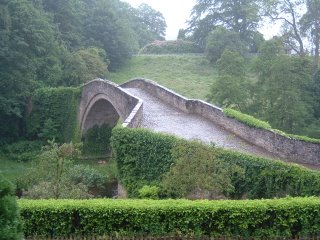
Brig o' Doon
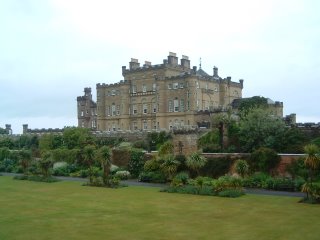
Culzean Castle
You may think that the skies in these pictures of the southwest coast look rather dour, but they were bright compared to what we found in the Highlands and Isles during the following days. We drove up to the Isle of Skye, where we had hoped to spend half a day hiking. Fat chance. Gale winds (up to 70 mph) and rain whipped around our bed-and-breakfast, convincing us that a driving tour was our best bet, despite the island’s one-lane roads. Fortunately, we found respite from the weather in the Tilasker Distillery, where we studied the whisky-making process and sampled a bit of the product, and the Dunvegan Castle, seat of the Laird of Clan Macleod. The rest of the drive was nothing but wind and rain, although the weather abated that evening to permit us to take this photograph from our B&B. As Sir Walter Scott wrote of Skye, “A scene so wild, so rude as this, yet so sublime in barrenness.”
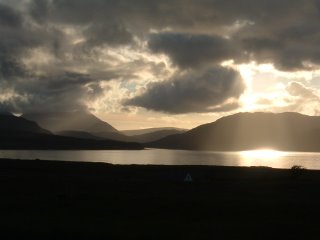
Isle of Skye
Meteorological conditions improved somewhat as we drove eastward past Urquhart Castle on Loch Ness (you’ll notice the monster in the loch a bit behind the castle) and Culloden, where Bonnie Prince Charlie’s unrealistic hopes were finally dashed in 1746, to Aberdeen, where Georgia had spent a year in the 1960’s. After shining up the plaque on her former home, we visited Aberdeen University, which has some fine 16th Century buildings, including the chapel, which features a lantern tower to honor its founder, James IV. Our local Aberdeen pub provided some memorable meals, including Todd’s dinner of haggis, tatties and neeps [potatoes and turnips], which were truly delicious. Leaving Aberdeen the following day, we moved on to Dunfermline, outside of Edinburgh, by way of Balmoral Castle, the Queen’s summer getaway.
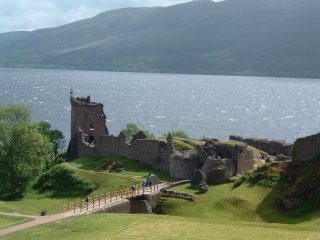
Urquhart Castle
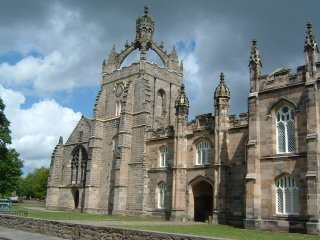
University of Aberdeen
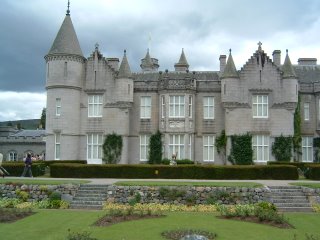
Balmoral Castle
A day in Edinburgh is far too short, but we made the most of it. Starting at one end of the Royal Mile, we visited Holyroodhouse, the Queen’s Scottish palace, and then toured the new Scottish Parliament House, which was built, we are told, at a cost overrun of 4000%. The following photograph shows the window designs in the plenary chamber; our guide claimed they represented Scottish citizens observing parliamentary debates, but our tour group universally thought they looked like whisky bottles. Farther up the Royal Mile, we could not enter St. Giles Cathedral because of an impending wedding, but took this picture of the bride and groom accompanied by their piper, who seemed rather amused by the whole affair. We ended up in Charlotte Square, the heart of the New Towne, where there is some of the best Georgian architecture in Britain.
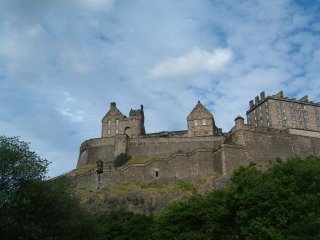
Edinburgh Castle

Holyroodhouse
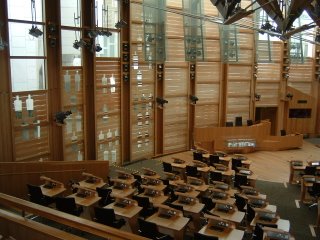
Scottish Parliament
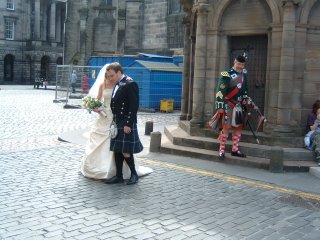
Bride and groom on Edingburgh's Royal Mile
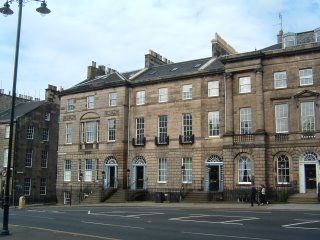
Charlotte Square, Edinburgh
We also spent a day touring north of the Firth of Forth, especially at Crathes Castle, another outstanding noble residence, where Georgia took this picture of geraniums in the castle garden. (Please note the bee.) The obligatory visit to St. Andrews was also on the itinerary, as was Culross, a wonderful 16th-17th Century village on the Forth, where a number of buildings have been preserved, thanks to the National Trust for Scotland. Our final stop was Dunfermline itself, Scotland’s ancient capital, where Robert the Bruce is buried and James VI was resident when he heard that Queen Elizabeth had died naming him as her successor. The old palace has almost completely decayed, but its grandeur remains—as does the birthplace of Andrew Carnegie, who never forgot his roots and established a trust that still benefits the city.
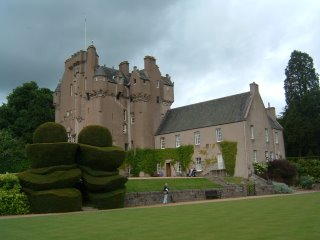
Crathes Castle
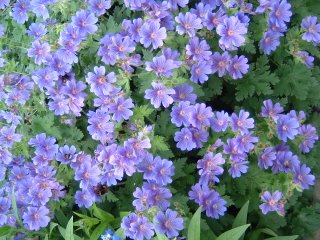
Blue geraniums

St. Andrews Old Course

Culross
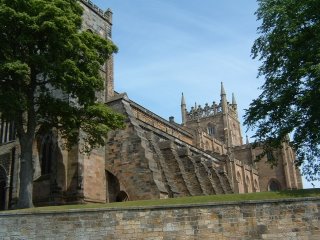
Dunfermline Abbey

0 Comments:
Post a Comment
<< Home